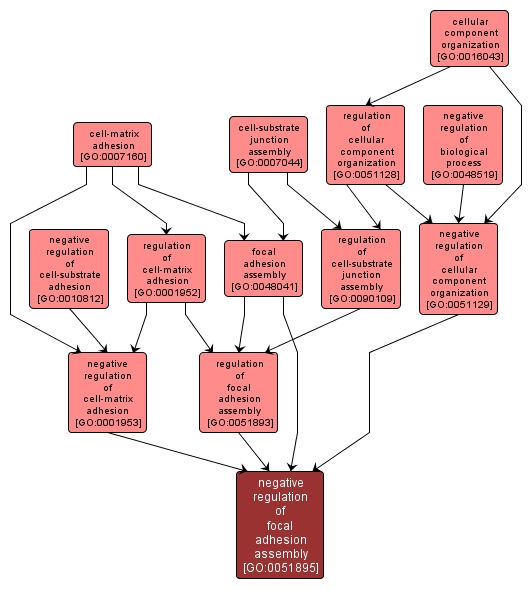GO TERM SUMMARY
|
| Name: |
negative regulation of focal adhesion assembly |
| Acc: |
GO:0051895 |
| Aspect: |
Biological Process |
| Desc: |
Any process that stops, prevents or reduces the frequency, rate or extent of focal adhesion assembly, the establishment and maturation of focal adhesions. |
Synonyms:
- down-regulation of focal adhesion formation
- inhibition of focal adhesion formation
- downregulation of focal adhesion formation
- down regulation of focal adhesion formation
|
|

|
INTERACTIVE GO GRAPH
|














